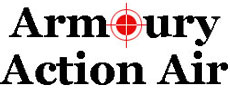The UKPSA has sanctioned a Classification System for Action Air Shooters.
This has been in force for other shooting disciplines, and the fact that Action Air is now recognised is a great step forward for this fast-growing discipline.
Below is an extract from the UKPSA announcement, and the classification system is starting April 2018.
The only caveat is that you must be a member of the UKPSA – which I personally would recommend as this gives excellent benefits such as public liability insurance, competition licensing and access to advice and help on all things relating to practical shooting. This new system gives added benefits even if you don’t want to shoot in Level 2 or 3 Competitions.
———————————————————————–
FROM THE UKPSA
What is Classification
For some time, the IPSC has run a classification scheme known as the IPSC Classification System (ICS) for full bore handgun. The primary reason for its’ development being the demand of members for a national and international ranking system that provides a vehicle for true peer to peer recognition and comparison –which often proves to be a great motivator to train harder and improve!
The ICS operates by competitors submitting their results from either Classifier Matches (Level 3) or shooting Classifier Stages published on the IPSC website either in isolation or during an unsanctioned match. A competitor can achieve initial classification with 4 scores. Following this, the classification is based on the average of the best 4 scores of the most recent 8 classification records submitted. In order to maintain their Classification, competitors must keep current IPSC membership and submit scores for a minimum of two Classification Stages or one Classifier Match each calendar year.
Within the UKPSA, we have traditionally awarded competitors a classification at the end of a shooting year based upon their performance at Sanctioned Matches (Level 2 and Level 3). This is a tried and trusted system however, it only recognises competitors who have competed at classifying matches and overlooks many members of the Association who do not compete at that level.
Purpose of the UKPSA Action Air Classification System (UAACS)
Recognising the positive effect such a system could have on clubs, the purpose of the UAACS is to provide a similar vehicle to the ICS and allow dynamic peer to peer comparison of UKPSA members actively involved in Action Air shooting. It does not replace the existing system –it simply runs in parallel.
UAACS Eligibility and Scheme Operation
To receive a UAACS Grading, you must be a current member of the UKPSA.
Scores from UAACS Classifier Stages should be submitted to the UKPSA Action Air Sec who will operate the scheme on behalf of the RD.
Only the stages contained within the Course of Fire (CoF) Handbook are approved. They are drawn directly from the ICS and adapted for Action Air by substituting full size IPSC targets and Poppers for the approved Action Air targets and reducing the engagement distances by 1/3rd. Therefore, Power Factor notwithstanding – the stages are identical to those of the ICS.
As and when the ICS Classifier Stages are updated; this CoF handbook will be amended to reflect those changes
UKPSA Action Air Classification System Determining Classifications Policy
The UAACS is a dynamic system, like the ICS, meaning competitor classifications will move up or down based not only on their own performance, but also on the performance of other competitors. Classifications are calculated by Division and competitors are free to submit scores for each Division in which they wish to be classified.
A competitor will receive an initial classification once they have submitted 4 classifier scores based upon the average of those 4 scores. Thereafter, their classification will be based on the average of the best 4 from the 8 most recent classifier scores submitted.
In order to maintain their classification, competitors must remain current members of the UKPSA and submit scores for a minimum of 4 classifier stages per calendar year (Jan-Dec). Scores may be submitted at any time however, stages may not be repeated more frequently than once every 6 months, i.e. if a competitor submits a score for Stage 01 in Jan, the earliest they could submit another score for the same stage would be Aug of that year.
Competitors may be removed from the UAACS at the end of the second consecutive year where insufficient scores are submitted to maintain a classification.
Calculation of Classification
An example is shown below of how classifications are determined:
As with the scoring at a match, a competitor’s performance will always be compared against the High HF for that stage. As and when a new High HF is posted for a given stage, all classifications based upon that stage will be affected.
| As the UAACS develops and more competitors record their scores, the classifications attained will better reflect a competitor’s performance against their peers.
The Table below shows the scoring bands necessary to achieve the various levels of classification.
|
|
